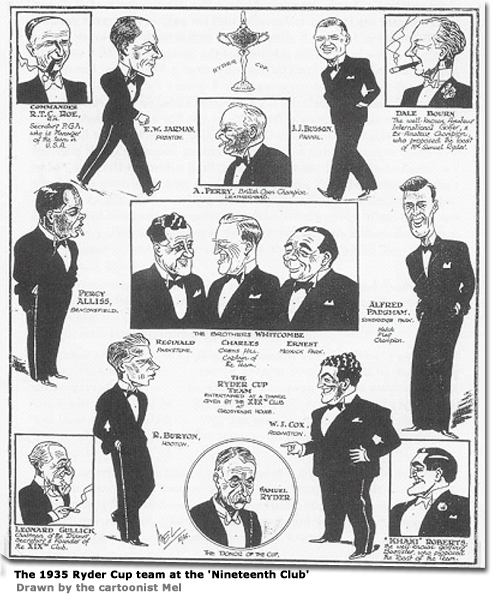|
| |
|
Ted. It was to be
his only appearance in the matches, but he lived to be the oldest
Ryder Cup player. He passed away in 2003 at the age of 95. The year
after the Muirfield Open Ted was appointed pro at the West
Lancashire club, where he remained for 36 years. Also unlucky in 1935 was Ted’s predecessor at Prenton - Bill Davies, who had moved to the nearby Wallasey club – the home of Stableford. Bill had played in the two previous Ryder Cups but had not shown much form that year until his victory in the Northern Professional Championship at Moortown – too late! It came after the team had been chosen, although the fact that he was now a few years past his fortieth birthday would have been another consideration. When the next Ryder Cup came around it was me who was to find form too late - in what was to be my best year. 
The financing of the Ryder Cup still depended on donations and that
July the PGA appealed for subscriptions to the fund. The newspapers
reported that approximately £8/900 was still needed to send the team
to America for the match at Ridgewood C.C., New Jersey. Fund raising
events included a match, involving all the Ryder Cup players, at Alf
Perry’s club – Leatherhead, in which Ernest Whitcombe partnered
James Braid to beat his brother Charles Whitcombe and Sandy Herd.
Competitors played the bigger American ball that was to be used for
the match. The 1.68" diameter ball had been in use in the USA since
1932, but very few professionals on this side of the Atlantic
favoured the American size and weight and forty years were to go by
before the PGA finally adopted it for professional tournaments in
this country. |
